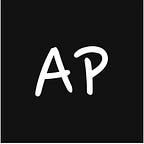Sustainability is the new black
A Design Sprint result
Isn’t it? Or is this a trend that is going to be established entirely in our society?
My team and I were asked “How do you think the future of the e-commerce is going to be like?” This wasn’t an easy question for four beginners who were in front of their very first UX/UI project, even so we all agreed on the same answer.
Everyone can see the accelerated evolution of the e-commerce caused by the pandemic. As users, in the next 10 years we are going to undergo behavioural changes and new ways of buying products are going to be developed.
However, we took the focus on sustainability, today’s trend but tomorrow’s lifestyle. In this context, through Design Sprint methodology, we created Natur; an app that would allow users to relish an ecological purchase of 360º. That includes eco-friendly products from local commerce, sustainable shipping packaging and electric transport for the delivery.
In the following lines I’m going to guide you across the journey that we went through to get at this point, we had 5 days to deal with the five Design Sprint’s stages; an intense week but it was worth it ;)
All said, hope you enjoy the journey as well as we did!
Day 1: MAP
On the first day we had the challenge on the table, but we needed to narrow it into a specific approach. While talking with my teammates, we all agreed that there’s a tendency of users to be more conscious about the ecological impact of our consumption. Not to mention, today is easy to see brands that have a social compromise with the environment, therefore more users are buying this type of products.
As a team we wanted to collaborate with the environmental footprint. Along this aim, we thought about a marketplace exclusive for ecological brands, which offers a complete eco-friendly service.
We made a map with the challenge written down along with the sprint questions, user journeys -two from the user’s point of view and one from the manufacturer’s- and HMW questions. All of this helped us to focus the challenge on a goal: ¿How could we satisfy our users with a purchase 100% sustainable? And ¿How could we make proximity puchases easier?
Day 2: SKETCH
A day of solutions
Before turning on our creative machine we met all together to inspire each others through the Lighting Demos technique. Getting to know projects from other companies allowed us to be open minded before the creativity was about to flourish.
The moment arrived, each of us mixed all the information that we had been collecting and began to produce ideas. At this point we weren’t aware that the four of us realized that the problem of sustainable e-commerce was centered in the delivery stage. Even if ecological brands produce eco-friendly products, their delivery isn’t as sustainable as the product itself. Without noticing it, we were producing ideas focused on this aspect.
At the end of the day, every teammate had their own proposal.
Day 3: DECIDE
We started the day having the four proposals in front of us. Surprisingly, our ideas were similar, which made us be aware of the slight switch that our goal took: the problem that certainly had to be solved was delivery.
Focused on this, we took the most prominent ideas to create our definitive product: An app which users are able to buy all sorts of ecological products while ensuring a sustainable online purchase; by not having our own warehouse and allowing proximity purchases.
The acquisition process was settled in order to make sure that sustainability was ever-present in each step.
Afterwards we created wireframes to be prepared for the following day, which wasn’t going to be peaceful…
Day 4: PROTOTYPE
The wildest day of the process became a reality. Through Figma we worked together during 7 hours designing the facade of our app. The aim of that day was to create a realistic prototype able to be tested the following day. After hours of rushing and sweating, we did it!
Day 5: TEST
The last day arrived along the user tests. I must say I really enjoyed this part!
The potential users of our app are not defined by the age range, it’s more about their personal values. The people who could use Natur are the ones that want to participate in the environmental footprint. However, as students, we had to do a guerrilla usability test, but we tried as hard as we could to have a sample with different ages but same values.
The user was asked to do 4 different routes: buy a specific product, track the order, do a refund and give their opinion on a product that had already bought. The results of the test were exposed on a chart and clearly we had to improve several things. The main one was the refund route, every user had problems to understand how they were able to do it.
The refund improvement consisted in making clear where the refund section was, for that we had to use the specific word instead of our “Plan Renove”. Apart from this others improvements had to be done: make more visible categories on the main screen, create a clear distinction between the orders that are on their way and the products that you already have. Give more information in some screens such as the tracking part and the product’s rating.
The last but not the least picture demonstrates the result of our MVP. It has been an energetic week, but at the end, we can say that we’ve overcome the challenge successfully! While we learned plenty of things from the UX/UI world.
I’ll keep you posted on the following projects that are about to come :)
